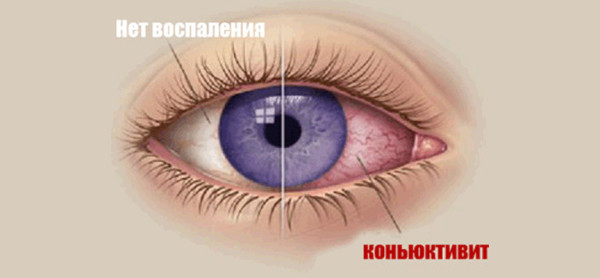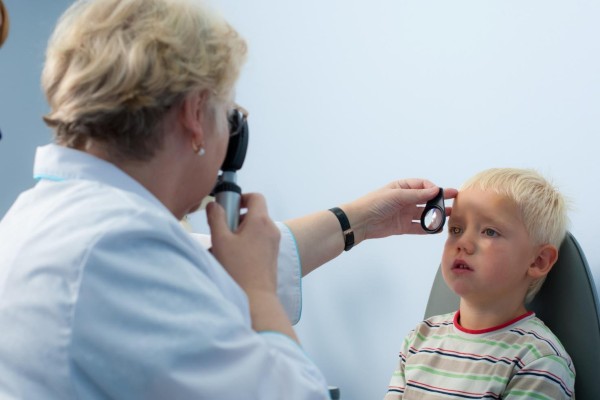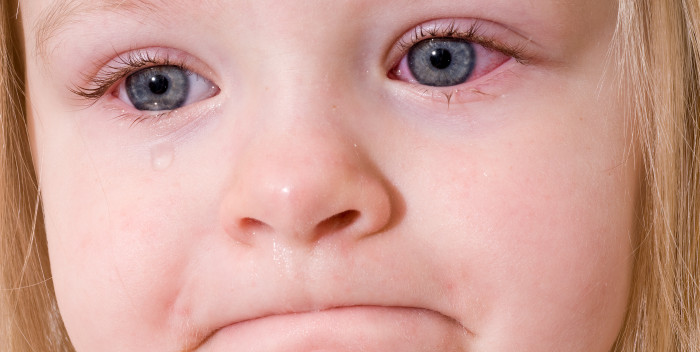Conjunctivitis in children
Among ophthalmic diseases, conjunctivitis holds one of the first positions. Often, parents listen to the advice of pharmacists or older relatives and begin to treat the child on their own. You shouldn't do that. Let's figure out what conjunctivitis is and how to treat it correctly.
Content
Causes of conjunctivitis in children
The type of conjunctivitis also determines the reasons for which it is caused. The disease can be:
- Allergic- in this case, the child complains of itching in his eyes, tears flow all the time. Pus with this form of conjunctivitis does not appear.
- Viral - with a similar course of the disease, you can see irritation and redness of the eyes, pus is separated in a small amount.
- Bacterial. In this case, the baby will have thick and sticky pus.
The latter form of conjunctivitis occurs most often. Bacteria can enter a child's eye in different ways - during the removal of a speck from the eye or due to the habit of scratching his eyes with his hands. Even commonplace dust can become a carrier of bacteria, which cause pus to appear in the eyes of a baby.
 The viral form does not appear as often as the bacterial form, but it is also quite common. Such a disease can be a consequence of ARVI or an independent ailment. Viruses enter the eyes through the lacrimal canals, from the nose, multiply on the mucous membrane of the eye, so there is swelling and redness.
The viral form does not appear as often as the bacterial form, but it is also quite common. Such a disease can be a consequence of ARVI or an independent ailment. Viruses enter the eyes through the lacrimal canals, from the nose, multiply on the mucous membrane of the eye, so there is swelling and redness.
Allergic conjunctivitis is caused exclusively by an individual characteristic of the child's body. Most often, this form of allergy is caused by dust, medicines or plant pollen.
Conjunctivitis symptoms in children
The disease begins to manifest itself with reddening of the white of the eye. Then the swelling of the eyelids and mucous membrane is connected. Finally, discharge from the eyes in the form of pus is added to these symptoms. Often, with such manifestations of the disease, a child's temperature rises, he eats poorly, becomes nervous and restless and does not sleep well.
The child most often complains of a burning sensation in the eyes, constantly scratches them. During sleep, due to a purulent department, his cilia may stick together. Dried crusts of pus appear at the corners of the eyes.
 For any of these symptoms, you should definitely consult with a pediatric ophthalmologist, who will prescribe the correct treatment, determining the nature of the disease. Self-medication for such a disease can be extremely dangerous, up to complete blindness.
For any of these symptoms, you should definitely consult with a pediatric ophthalmologist, who will prescribe the correct treatment, determining the nature of the disease. Self-medication for such a disease can be extremely dangerous, up to complete blindness.
Conjunctivitis treatment in children
Recommendations for the treatment of the disease depend on the cause that caused it. You do not need to choose the medicine yourself or rely on the advice of a pharmacist. It will be correct to contact an ophthalmologist for advice, to pass all the necessary tests to determine the cause of the disease. Only a doctor can decide what exactly needs to be treated for a baby.
Usually, ointments or drops and fortifying drugs are used to get rid of conjunctivitis in a child. This takes into account both the form of conjunctivitis and the age of the child.
The bacterial form of the disease is treated with antimicrobial drugs. They suppress the vital activity of bacteria and cure the disease in a short time. Usually, children are prescribed Albucid, Tsiprolet, Levomycetin, Futsitalmik. All of these drugs are effective for certain types of bacteria and microorganisms.
To relieve inflammation on the mucous membrane of the eyes, Tobrex, Erythromycin, Tetracycline or Eubetal ointments are used.
The viral form of conjunctivitis requires the use of completely different drugs. The funds used for treatment in this case are aimed at suppressing viruses and increasing the immune properties of the child's body. These are medicines such as Oftan Idu, Aktipol and Ophthalmofen.
In addition to these drugs, Florenal, Bonafton or Tebrofenovaya ointments are also prescribed. If conjunctivitis is caused by a herpes virus, then Acyclovir or Zovirax ointment is prescribed.
Conjunctivitis of an allergic nature usually does not require separate treatment. In this case, it will be enough to eliminate the source of the allergy. To alleviate the condition of the child or to prevent the disease, you can use Allergodil drops.
 In addition to using medicines, you should often rinse the child's eyes with a decoction of chamomile from purulent discharge. This should be done towards the inner corner of the eye and very carefully. Use disposable cotton pads for this. It is better not to use folk remedies like compresses and lotions for the treatment of conjunctivitis, the consequences can be dire.
In addition to using medicines, you should often rinse the child's eyes with a decoction of chamomile from purulent discharge. This should be done towards the inner corner of the eye and very carefully. Use disposable cotton pads for this. It is better not to use folk remedies like compresses and lotions for the treatment of conjunctivitis, the consequences can be dire.


